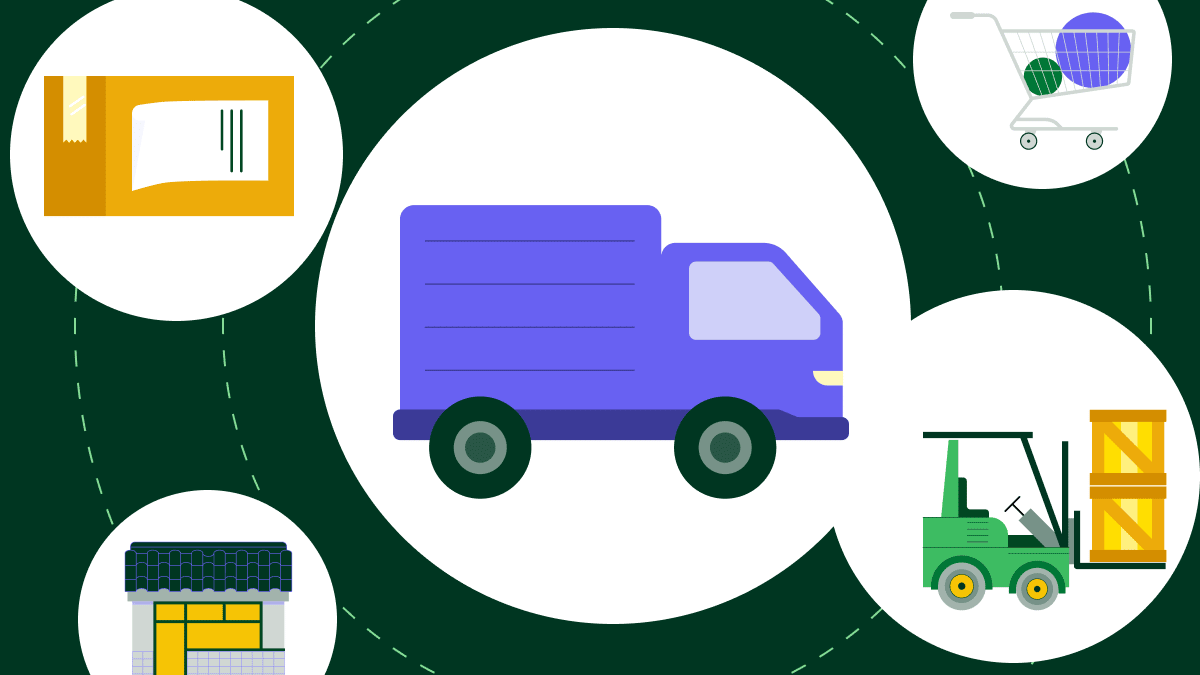Content marketing is a great way to grow your business but it can take a lot of time to plan and execute an effective strategy.
Luckily, content marketing automation tech can free talented marketers to apply their skills more efficiently. However, if you automate too much, you risk making your content feel robotic and soulless. It’s important to find the right balance.
In this article, you’ll learn which tasks to automate and which to leave alone so you can boost productivity and get bigger results from smaller budgets. We’ll also recommend three powerful content marketing automation tools to get you started.
What is content marketing automation (and how will it help me)?
Content marketing automation is the process of identifying repetitive content marketing tasks and automating them using technology. Its main aims are to increase productivity and improve campaign outcomes.
For example, instead of individually sending download links to anyone who requests access to gated content (content behind a paywall or email signup), you should use marketing automation software to trigger emails. For every email sent, your marketing team gains 5 – 10 minutes to spend on more demanding work.
Many businesses are realizing these benefits. Our 2021/22 State of Sales and Marketing Report revealed that the use of automation tools in the workplace rose 23 percentage points between 2019 and 2022. We also learned that marketers are more likely to use this tech than any other professional.

As you see in the chart above, customer relationship management (CRM) software is growing in popularity too. Pipedrive is one example of CRM tech with workflow automation features built in.
How will content marketing automation help me?
Increased productivity is the broadest prize for automation adopters but a strong strategy can improve campaign outcomes in many more specific ways.
Here are four reasons to automate content marketing tasks:
Reduce your team’s workload (to allow more creativity). The less time a team spends on repetitive work, the more it has for strategizing and collaboration.
Speed up workflows. Marketers can apply their skills to demanding tasks while admin happens in the background. Streamlined workflows mean you’ll get results sooner and grow faster.
Cut costs. As software takes care of repetitive tasks, you can achieve more with a smaller team. Save on wages and outsourcing costs to improve your bottom line.
Minimize human error. Unlike humans, software is immune to complacency. Content marketing automation platforms reduce human error to increase consistency, compliance and security.
Assess the impact of your automation efforts by tracking campaign spending, average sales cycle length and customer acquisition costs (CAC). We’ll talk more about how to automate performance tracking later in the article.
5 content marketing tasks to consider automating
You can’t (and shouldn’t) automate all content marketing tasks. To automate effectively, you must separate the work that tech can handle from creative content marketing jobs that need human attention.
For example, a good CRM can segment your audience into meaningful groups but it takes in-person collaboration to create fully formed buyer personas.
Here are five tasks that content marketers should consider automating:
1. Email marketing personalization
Ascend2 research lists email marketing as the most popular area for automation among marketers in 2022.
Crafting persuasive email content requires copywriting skills. Once you have the core messages you can delegate personalization to technology.
This is much easier with a combined email marketing and CRM tool like Campaigns by Pipedrive.
Campaigns’ drag-and-drop email builder makes it easy to craft stunning templates. It can then pull CRM data to ensure each message you send includes the recipient’s name, account details and other relevant information. As all of this information is already housed in your CRM, there’s no risk of data duplication or manual errors when transferring list data between platforms.
Travel firm Jet2holidays uses automation to add recipients’ names to emails (“Smiles Davis” in the example below):

Basic personalization makes subscribers feel like you’ve created content specifically for them. Use it to grab attention in subject lines and make lead generation and lead nurturing content more engaging. Email platforms like Campaigns can help you provide deeper levels of personalization through list segmentation. More on that later.
2. Content scheduling and triggering
Timing is a key ingredient of successful content marketing. Boost engagement by reaching your audience when they’re most receptive. For example:
If you post on social media while 80% of your target audience is asleep, your content will be buried in users’ feeds by the time they wake up. Or worse, algorithms will bury it for you due to a lack of immediate engagement.
If you post when your audience is up and active, you’re likely to catch them during breakfast or the commute when they have time to read and engage.
Scheduling tools allow you to automate content distribution so you don’t need to keep track of publishing times during campaigns. You can use them in all areas of content marketing, including:
Social media posts. Business users of most major platforms can schedule posts from their accounts. Use third-party tools like Hootsuite, Loomly and Crowdfire for more planning control.
Blog posts. Most content management systems (CMS) allow you to specify publishing dates and times. Some allow you to schedule content removal, too. You could use this to stop time-sensitive content from confusing visitors.
Marketing emails. Use email marketing software to schedule email newsletters, sticking to the frequency you promised in your welcome message. You can also trigger activity-based selling messages like order confirmations and checkout reminders.
Consolidating publishing tasks boosts productivity, but don’t get complacent. Revisit your schedule monthly to refine dates, times or content to align with product changes and other events.
3. Market segmentation
Market segmentation involves splitting your audience into groups with shared characteristics. It’ll help you create relevant content for different buyer types.
For example, geographic segmentation might inspire you to create content in multiple languages. You can also adjust details like currencies and spelling so all readers can relate.
Geographic and demographic segmentation are solid starting points but will only provide a surface-level view of your customer base. With the right data, a good CRM can quickly and automatically group your audience using behavioral factors like:
Shopping habits
Interaction history
Customer lifecycle stage
Instead of using complex spreadsheets and note-taking apps, store everything you learn about buyers in a CRM. The best tools will use that data to help you quickly filter email lists and understand the general makeup of your customer base.
4. Performance reports generation
Tracking marketing performance allows you to refine your strategy for better campaign outcomes.
You can gauge success by comparing current results against past numbers. However, tracking large volumes of data in a spreadsheet is tough. Even when you’ve recorded everything, you’ll still need to make sense of it to glean useful insights.
It’s much faster to let technology organize, process and present performance data for you. The dashboards and reporting features of a CRM, email marketing app or website analytics tool turn metric data into insights to help marketers make better decisions.
For example, Google Analytics tracks various metrics to measure content performance. You could use it to see which blog post attracted the most clicks in 2022 by setting date parameters and ordering the results by “Pageviews”. The screenshot below appears on the Semrush Blog:

Any tool that collects and presents performance data like this can help you refine your content marketing strategy. For example, once you’ve found the best-performing pieces of content for 2022 in Google Analytics, use them to inspire your output in 2023.
5. Data synchronization across sales and marketing platforms
Having multiple tech platforms can aid business performance. According to US Chamber of Commerce data, small businesses using six or more applications are more likely to see growth in profits, sales and employment than those using fewer.
However, a large tech stack is only helpful when data is consistent and accurate across all platforms.
The thought of constantly importing and exporting data between tools and spreadsheets might stop you from investing in software that could help you.
Pick solutions that integrate so that data synchronizes automatically. Pipedrive connects to all your favorite content marketing tools to enhance rather than replace them.
For example, Outgrow allows marketers to create personalized content like quizzes, forms, surveys, chatbots, polls, contests and assessments. Once connected to Pipedrive, any leads you generate with Outgrow content will show in your CRM so sales reps can quickly follow up. You can even trigger automatic emails to anyone who interacts with the content.
Pipedrive customer Trainify benefits from having its CRM and marketing tools in one place. CEO Viktors Pedčenko explained:
Read Trainify’s case study for the full story.
The content marketing tasks you definitely shouldn’t automate
Automation isn’t a quick fix for all your content marketing issues. By trying to automate tasks that require human attention, you risk losing the personal touch that separates you from your competitors.
That personalization is too important to lose. According to the 2022 Gartner Service and Support Survey, 71% of business-to-consumer (B2C) and 86% of business-to-business (B2B) customers expect companies to be well-informed about their personal information during interactions.
While you can personalize with automation (e.g. injecting personal data into emails), some content marketing tasks are too delicate to automate.
Here are three tasks that always require human skill and attention:
In-depth written content creation
Artificial intelligence (AI) technology is advancing fast but it still can’t write all your content for you.
Good, in-depth content evokes emotion. It inspires readers to act. It doesn’t just tell them. To write copy that resonates, you need human qualities that algorithms can’t match: creativity and empathy.
Automation can contribute to your editorial process so don’t discount it. You can use bots to populate briefs with basic information. Automated project management workflows keep writers and editors organized too. However, when it comes to putting impactful words on pages, there’s no substitute for a real writer.
Content ideation meetings
You’ll find plenty of headline and content idea generators online. These tools are useful starting points but should support rather than replace team ideation sessions.
Great ideas come from human creativity and collaboration. That was one of the key findings of psychologist Kevin Dunbar, who studied ideation in laboratory environments. In his book Where Good Ideas Come From, Steven Johnson comments on that research:
Discussions allow marketers, like scientists, to present their own ideas and scrutinize others. What starts as a basic idea from an online generator can be refined until it’s fully formed.
Direct social media interactions
Social media is a direct channel to your audience. You can automate scheduling and basic posting but direct customer interactions should always be real.
Bank of America famously suffered an online backlash when it robotically asked activists challenging the brand if they’d like help with their accounts. It’s a prime example of how algorithms struggle with nuance.
In contrast, the team at software company Adobe acknowledges the detail in followers’ questions and replies with helpful information. This saves the user from having to take further action and enhances their experience.

You may not think of these interactions as content marketing but, being public, they form part of your brand story.
Chatbots still have places on apps and websites. They allow you to solve basic queries fast and direct more complex issues to suitable channels. Just stick to showing your human side on social media.
Use these great automation tools to get started
Automation can be daunting at first. The solution is to find intuitive applications with plenty of support and flexibility. Here are three great tools to get you started.
1. Pipedrive (and Campaigns)
Pipedrive is designed to streamline your sales cycle. It automates sales and marketing tasks throughout the buyer journey. That means you and your team can focus on satisfying customer needs.
Campaigns is Pipedrive’s built-in email marketing software. Use it to create stunning content, automate personalization efforts and track email campaign performance.
Pricing: Learn more about Pipedrive and our pricing, or get started with a 14-day free trial.
2. Zapier
Zapier promises “easy automation for busy people”. It’ll keep data flowing seamlessly across all your sales and marketing tools, including Pipedrive.
With tools synchronizing in the background, you can trust your contact and performance data is accurate wherever you look.
Pricing: Paid plans start at $19.99 per month. A free account targets individuals and limits automation to 100 tasks per month.
3. Outfunnel
Like Zapier, Outfunnel helps you connect apps and automate the flow of data between them. It lets you sync information and activities between your CRM (through an integration, like the one Outfunnel has with Pipedrive) and your top marketing and sales apps so you get the most out of them.
Because Outfunnel is targeted to sales and marketing workflows, it’s also quick and easy to set up.
The brand’s support page is organized by the various ways this tool can help you streamline processes, from web tracking to lead scoring to basic admin. It’s worth looking through the topics for an idea of what’s possible.
Pricing: Paid plans start at $59.00 per month with options to scale based on the number of active contacts you have. You can also sign up for a free 14-day trial for any plan.
4. HubSpot’s Breeze Content Agent
HubSpot’s Breeze Content Agent uses CRM data to quickly create blogs, landing pages, case studies and podcasts. It helps teams produce consistent, audience-focused content that drives leads without repetitive tasks. The tool maintains brand voice while adapting formats to engage visitors, transforming content creation into a streamlined process supporting marketing goals.
Pricing: The Breeze Content Agent is available with Content Hub Pro and Enterprise. Pricing starts at $450/mo with 3 seats included and $1500/mo with 5 seats included respectively.
Final thoughts
When you have the right tech and know which tasks to delegate to it, you can streamline your content marketing campaigns. The results are high-quality leads, enhanced customer experiences and more conversions.
Start by looking for automation features in the tools you already have. Project management software, CRMs and search engine optimization (SEO) tools can often help. Even spreadsheets can automate some basic time-consuming tasks, like calculations.
Identify streamlining opportunities in your content marketing process and search for tech that’ll help you work smarter. For the best long-term results, ensure every tool you choose can grow with your business.












